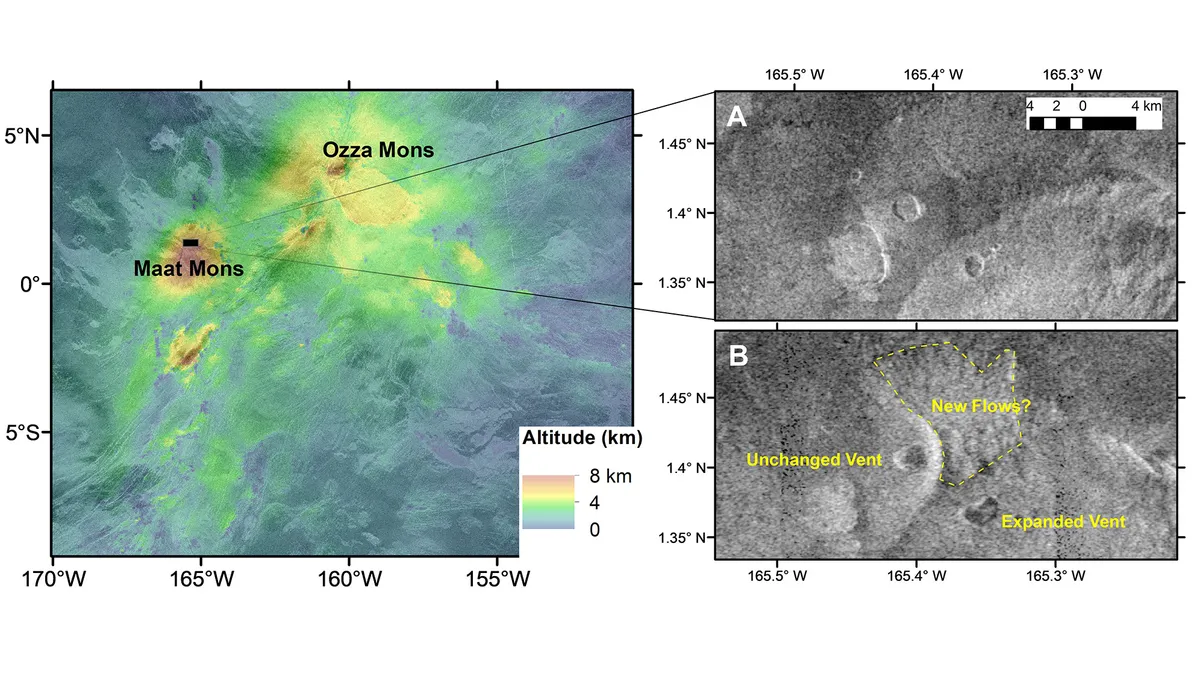Volcanic eruptions and magma flows could be taking place on the surface of Venus, researchers from the University of Alaska Fairbanks Geophysical Institute have found.The team studied data collected by NASA’s Magellan space probe in the 1990s, taking advantage of new computer technology that allows them to compare digital images more efficiently.
Their analysis focused on an area containing two of Venus’ largest volcanoes, Ozza and Maat Mons. They discovered a roughly 2.5km2 volcanic vent that changed shape and altered in size over eight months in 1991 on Maat Mons. On Earth, changes of this magnitude are often indications of volcanic activity.
“It is really only in the last decade or so that the Magellan data has been available at full resolution, mosaicked and easily manipulable by an investigator with a typical personal workstation,” said Robert Herrick, a research professor at UAF who led the research.
“Ozza and Maat Mons are comparable in volume to Earth's largest volcanoes but have lower slopes and thus are more spread out.”

The researchers compared two images of the north side of a domed shield volcano that is part of Maat Mons - one taken in February 1991, and one taken in October 1991.
Over this period, the vent had changed from being a circular shape of around 2.5km2 to a wobbly shape of around 3.75km2. The later image shows that the walls of the vent became shorter, indicating an eruption, and that the irregular shape could have been formed by magma flow during the eight months between the images, the researchers say.
There is one small caveat: the change in shape of the vent may have been caused by an earthquake. However, on Earth, vent collapses on this scale are always accompanied by nearby volcanic eruptions.
Volcanic activity on Venus could be further confirmed by future missions such as NASA's DAVINCI+ and Veritas and ESA's EnVision.
“We can now say that Venus is presently volcanically active in the sense that there are at least a few eruptions per year,” said Herrick.
“We can expect that the upcoming Venus missions will observe new volcanic flows that have occurred since the Magellan mission ended three decades ago, and we should see some activity occurring while the two upcoming orbital missions are collecting images.”
Read more about Venus: